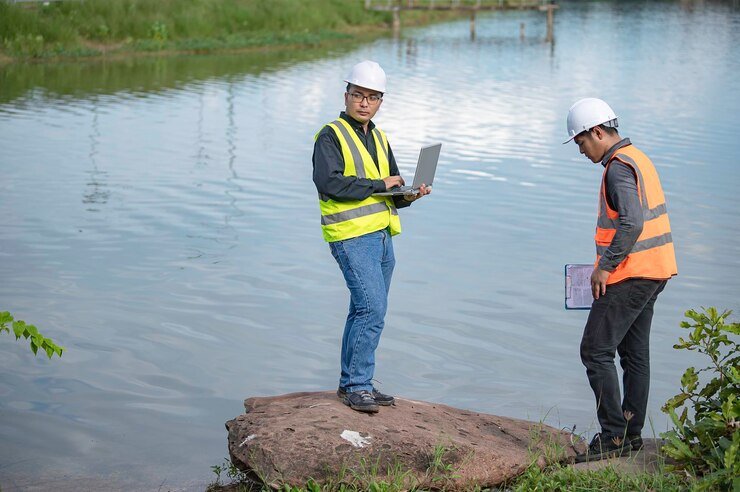How has easurarys been impacted estuaries are among the most vital ecosystems on Earth, serving as vibrant hubs where freshwater from rivers meets the saltwater of the sea. These unique areas create rich environments that support an incredible diversity of wildlife, act as natural water filters, and provide essential benefits for both humans and ecosystems alike.
However, estuaries are under increasing threat due to human activities and environmental changes. From pollution to habitat loss, these challenges are leaving a lasting mark on these critical ecosystems.
This blog explores the significance of estuaries, both historically and today, the challenges they face, and what can be done to protect and restore them. By the end, you’ll see why preserving estuaries matters and how you can play a role in their conservation.
What Are Estuaries and Why Are They Important?
Estuaries are semi-enclosed coastal areas where saltwater from the sea mixes with freshwater from rivers and streams. This unique blend creates brackish water, which is rich in nutrients and supports an array of plants and animals.
Why Are Estuaries Significant?
Estuaries serve many vital functions, including:
- Biodiversity hotspots: Estuaries provide safe breeding and feeding grounds for fish, birds, and other wildlife. Species like oysters, crabs, and shrimp thrive here, sustaining marine food webs.
- Natural water filters: Estuarine plants and sediments trap pollutants, improving water quality before it flows into the ocean.
- Coastal protection: Mangroves, seagrasses, and wetlands in estuaries act as natural buffers, reducing the impact of storms, waves, and flooding on coastal communities.
- Human benefits: Estuaries support multiple livelihoods, including fishing, tourism, and recreation, while also serving as sites of cultural and historical significance how has easurarys been impacted.
The Historical Role of Estuaries in Ecosystems
For centuries, estuaries have been essential not just to wildlife, but also to human civilizations. Communities settled near estuaries, utilizing their rich resources for food, transportation, and trade. Historical estuaries like the Chesapeake Bay and the Thames Estuary played key roles in shaping economies and cultures how has easurarys been impacted.
From ancient civilizations to modern-day economies, estuaries have remained a crucial part of Earth’s natural and human history.
How Has Estuaries Been Impacted? Challenges Facing These Ecosystems
Despite their profound importance, estuaries today face mounting threats, including:
1. Pollution
- Industrial waste and agricultural runoff release harmful chemicals and excess nutrients into estuaries, leading to water contamination.
- This nutrient overload can result in eutrophication, where algae blooms deplete oxygen, creating “dead zones” where marine life cannot survive.
2. Habitat Destruction
- Urban expansion, deforestation, and coastal development often result in the destruction of mangroves, salt marshes, and wetlands.
- Once these natural habitats are lost, the biodiversity and benefits they provide also disappear.
3. Climate Change
- Rising sea levels, caused by climate change, threaten to submerge estuarine habitats.
- Increased storm intensity and altered rainfall patterns disrupt the delicate balance of salinity in estuaries, endangering species adapted to specific conditions.
4. Overfishing
- Excessive removal of fish and shellfish from estuaries upsets the food web, impacting both marine and bird populations relying on these resources.
The Impact of These Challenges on Wildlife and the Environment
The degradation of estuaries reverberates through wildlife populations and the broader environment.
- Loss of habitat threatens species like migratory birds that rely on estuaries for rest and food during their journeys.
- Polluted waters lead to declining fish stocks, affecting not just marine ecosystems but also human communities relying on fishing industries.
- Reduced water quality impacts coastal health, making estuaries less resilient to environmental changes.
How Are Estuaries Being Protected and Restored?
Luckily, there’s growing recognition of the importance of estuary conservation, and numerous initiatives are underway to protect these ecosystems how has easurarys been impacted.
1. Habitat Restoration
Restoration projects aim to revive damaged estuaries. These include:
- Planting mangroves and seagrass beds to restore natural buffers.
- Rebuilding oyster reefs to support marine biodiversity.
2. Pollution Control
Efforts to limit pollution involve reducing agricultural runoff, implementing stricter wastewater treatment laws, and encouraging eco-friendly industrial practices.
3. Protected Areas
Designating estuaries as marine protected areas helps limit harmful activities like overfishing and unsustainable development.
4. Climate Resilience
Policies and projects focused on climate adaptation empower estuaries to withstand rising sea levels and extreme weather. These include creating living shorelines that mimic natural defenses.
How Individuals and Communities Can Help
Protecting estuaries isn’t just the responsibility of governments and organizations—individuals and communities play a vital role, too.
Here’s how you can contribute:
- Reduce pollution by using eco-friendly products, properly disposing of waste, and minimizing plastic use.
- Participate in local conservation projects, such as beach clean-ups and habitat restoration initiatives.
- Support sustainable seafood choices to reduce pressure on fish populations.
- Advocate for policies that protect estuarine environments. Write to your representatives and voice your support for conservation initiatives.
- Educate others about the importance of estuaries. Share your knowledge with friends, family, and through community events.
The Future of Estuaries and the Environment
Ensuring the survival of estuaries requires coordinated action on multiple fronts. The future of these ecosystems will depend on our ability to address the root causes of their challenges while empowering communities to take part in their protection.
By safeguarding estuaries today, we are not only preserving biodiversity and environmental health but also securing the benefits they provide for future generations.
How You Can Help Make a Difference Today
Protecting estuaries means taking action now. Explore local conservation efforts, make environmentally conscious choices, and advocate for their importance in your community. Remember, even small efforts collectively create meaningful change.
Together, we can ensure that estuaries remain resilient, thriving ecosystems that continue to enrich our planet.
